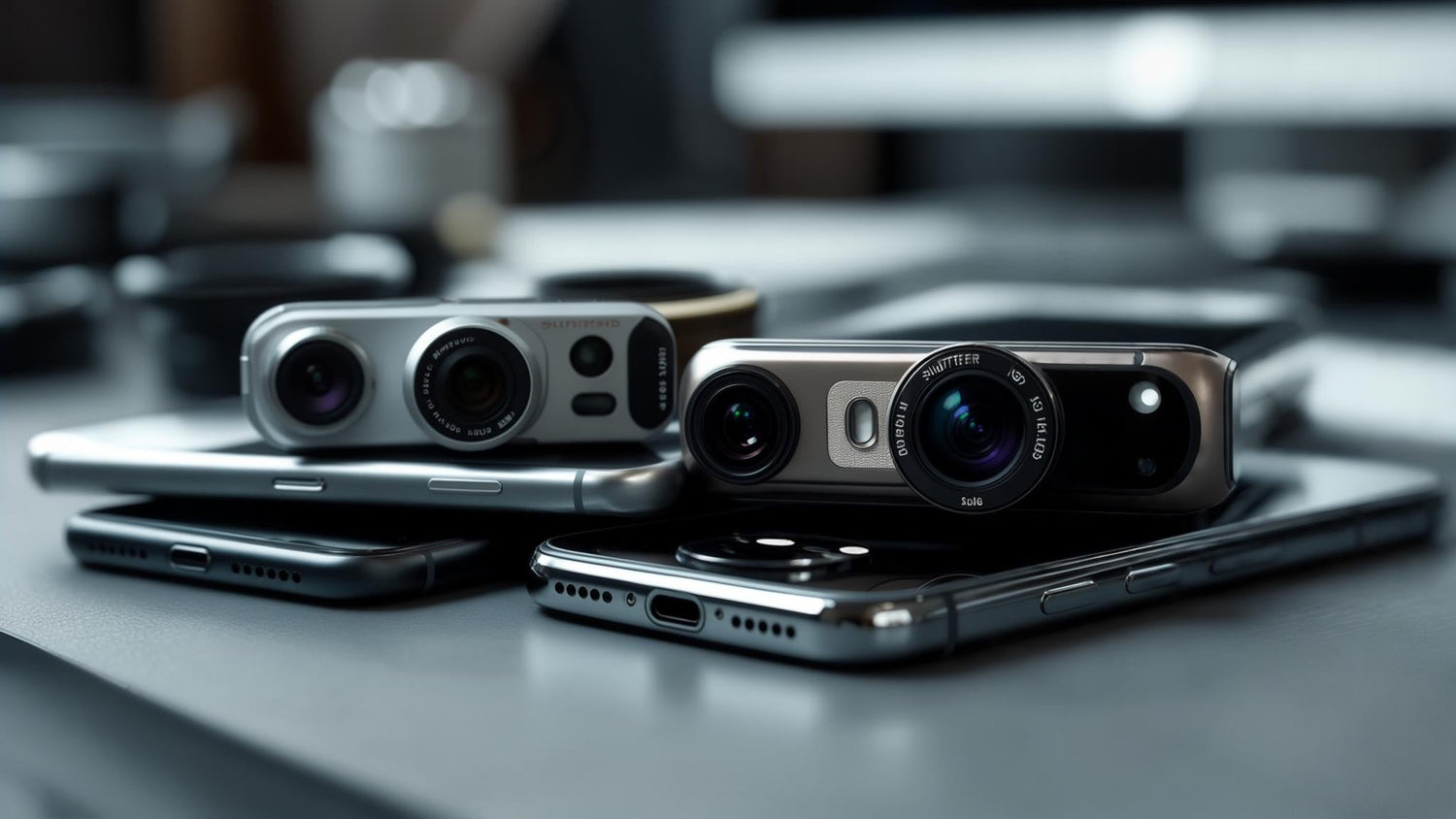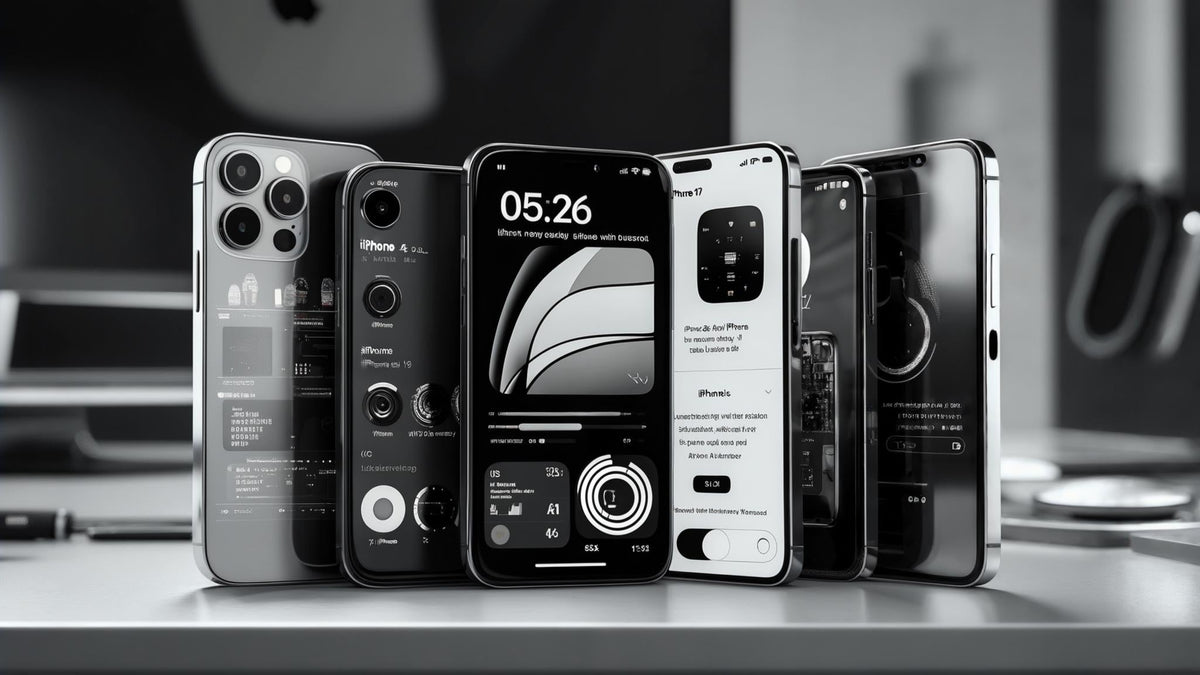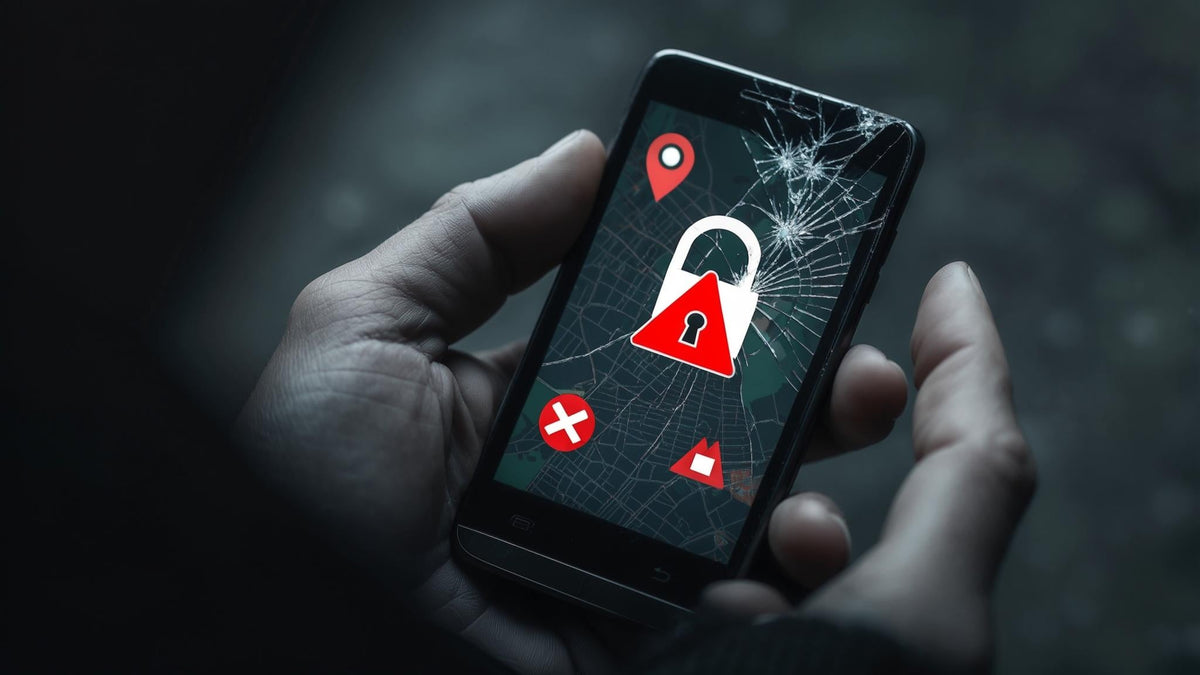Ever stood in a phone store, completely overwhelmed by camera specs that sound like alphabet soup? I get it. After testing dozens of phones (and taking way too many photos of my coffee), I've learned that the 'best' camera isn't always the one with the biggest numbers on the spec sheet.
This guide breaks down 26 smartphones that actually deliver when it comes to photography. From flagship powerhouses to budget champions, I'll tell you what these phones are really like to use - not just what their marketing departments want you to believe.
Table of Contents
TL;DR: Just Tell Me Which Phone to Buy
What Actually Makes a Phone Camera Great
Flagship Premium Category: The Photography Powerhouses
Premium Mid-Range Category: Flagship Features for Less
Mid-Range Value Category: Best Bang for Your Buck
Budget-Conscious Category: Quality Without Breaking the Bank
Specialized/Niche Category: Unique Photography Solutions
Foldable Category: Innovation Meets Photography
How Each Phone Actually Performs
Protecting Your Photography Investment with Rokform
The Bottom Line
TL;DR: Just Tell Me Which Phone to Buy
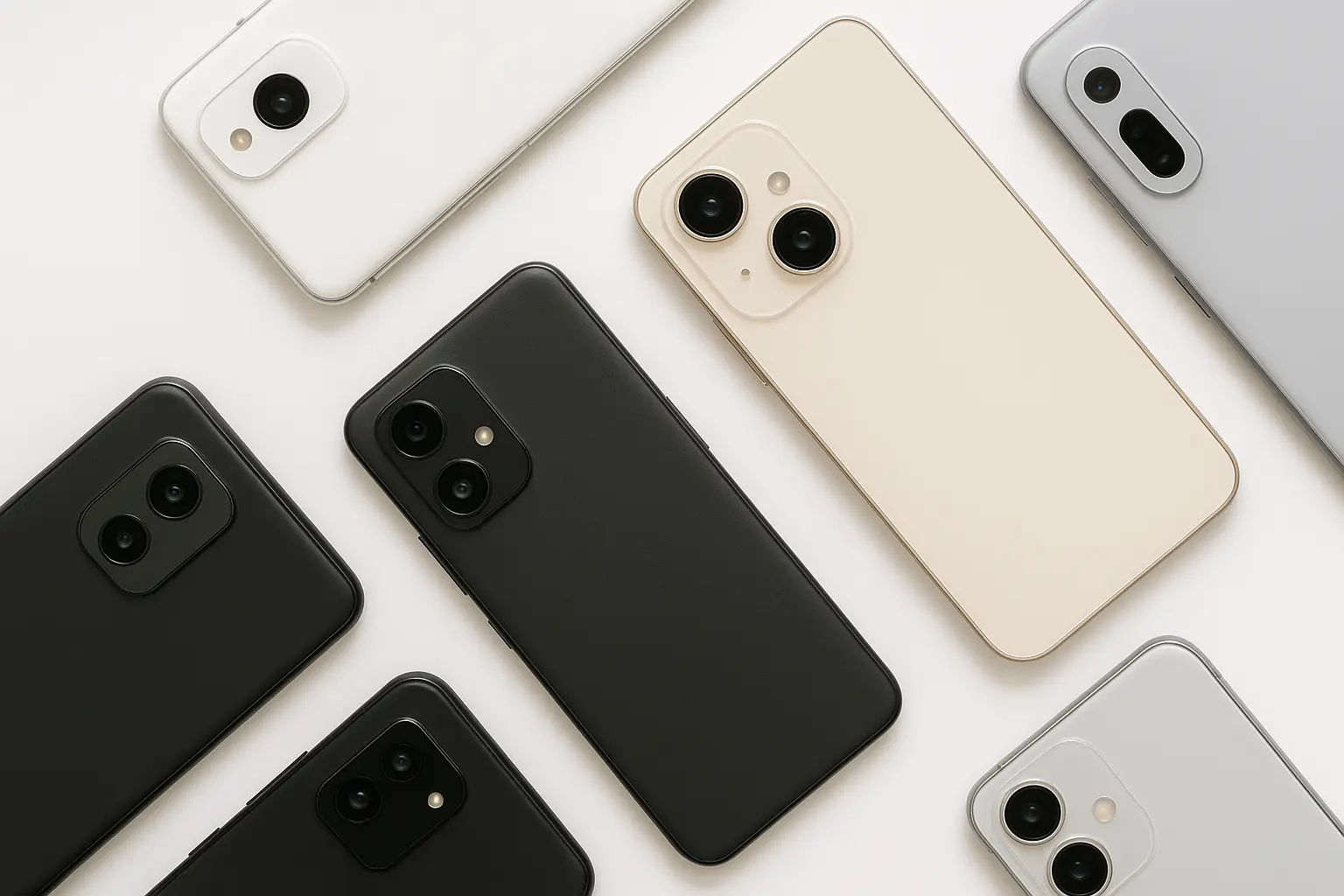
Look, I know you're probably here because you want the bottom line first. Here are my honest picks:
Best Overall: Google Pixel 8 Pro - It's basically magic in your pocket
Best iPhone: iPhone 15 Pro Max - Video quality that'll make you look like a pro
Best Zoom: Samsung Galaxy S24 Ultra - 100x zoom is ridiculous and I love it
Best Value Flagship: OnePlus 12 - 90% of the performance for 70% of the price
Best Budget Pick: Google Pixel 7a - Embarrasses phones costing twice as much
Best for Content Creators: Samsung Galaxy S24 Ultra - Features for days
Best Rugged Option: CAT S75 - Survives anything, takes decent photos
Most Versatile: Xiaomi 14 Ultra - Four 50MP cameras with Leica magic
If you want the absolute best phone camera without thinking about it, grab the Pixel 8 Pro. Google's computational photography is straight-up wizardry.
What Actually Makes a Phone Camera Great
Look, I'll be straight with you - megapixels aren't everything. I've seen 12MP cameras blow away 108MP ones because the real magic happens behind the scenes.
The Hardware That Actually Matters
Think of your phone's sensor like a bucket collecting raindrops. A bigger bucket (sensor) catches more light, which is why some phones with fewer megapixels actually take better photos than their high-resolution competitors.
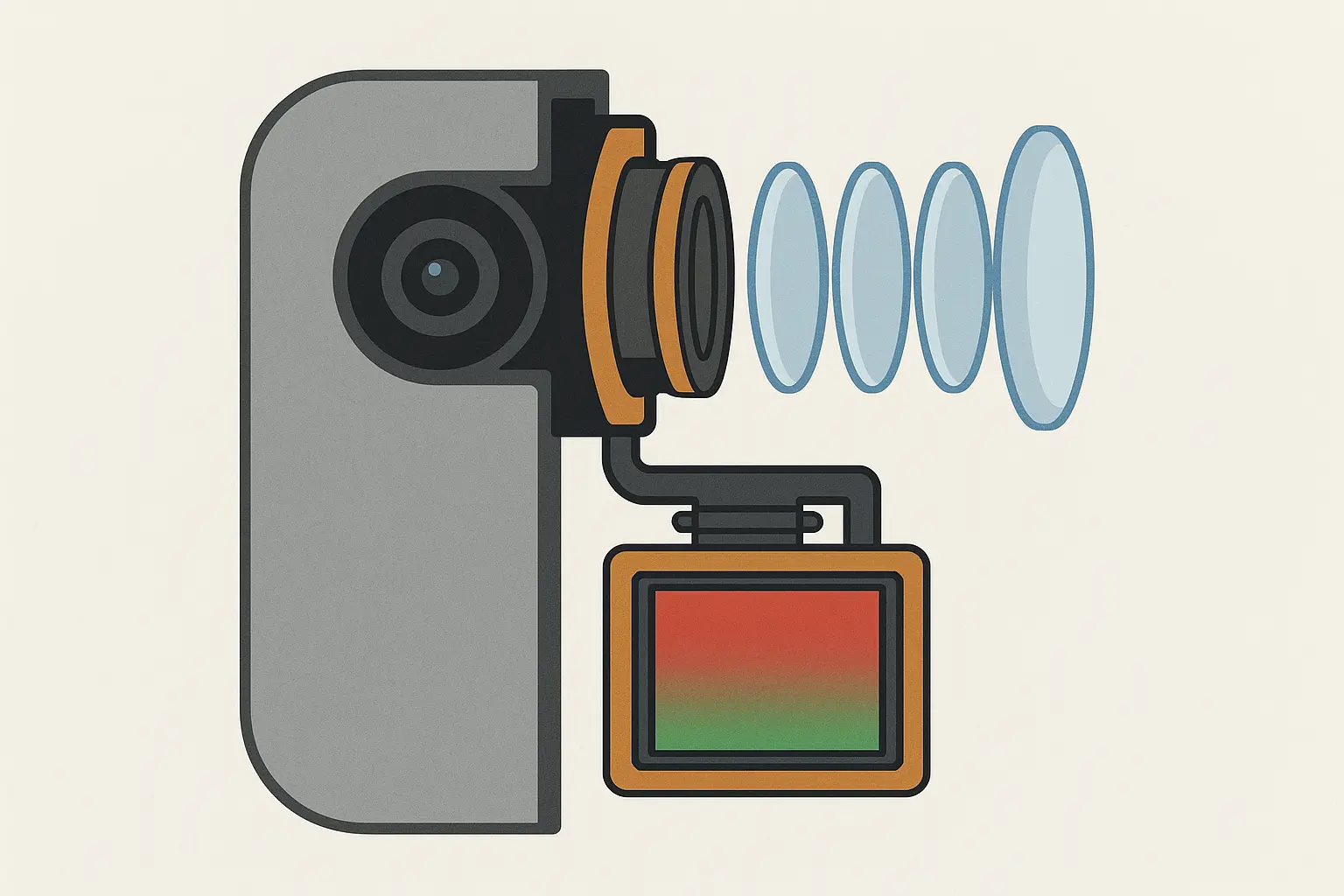
Those f-numbers you see everywhere? Lower is better for night shots. An f/1.4 lens lets in way more light than f/2.8, which means clearer photos when you're trying to capture that perfect sunset dinner.
And here's something most people don't realize - that little vibration you feel when taking photos? That's optical image stabilization working its magic, preventing the blurry mess you'd otherwise get from shaky hands.
Hardware Component |
Why It Matters |
What to Look For |
|---|---|---|
Sensor Size |
More light = better photos |
1/1.3" or larger for flagship performance |
Aperture |
Controls light and blur |
f/1.4-f/1.8 for main cameras |
Image Stabilization |
Prevents blurry shots |
Essential for telephoto and low-light |
Lens Quality |
Sharpness and color accuracy |
Multi-element glass with coatings |
Autofocus |
Speed and precision |
Dual Pixel or similar advanced systems |
Why Multiple Lenses Change Everything
Picture this: You're at the Grand Canyon. Your ultra-wide lens captures the entire breathtaking vista. Switch to the main camera for detailed shots of the rock formations. Zoom in with the telephoto to spot that tiny hiker on the distant trail. Three completely different photos, same moment, no walking required.
Macro photography lets you explore tiny details up close - think water droplets on leaves or the intricate patterns on a butterfly's wing. Some phones use dedicated macro lenses, while others cleverly repurpose their telephoto cameras for superior close-up results.
When Software Beats Hardware
Here's where things get wild - your phone is basically a tiny computer that happens to take photos. Night mode doesn't just brighten dark images; it takes multiple shots in milliseconds and combines them into something your eyes couldn't even see. Portrait mode uses AI to figure out what's a person and what's background, then blurs accordingly. It's honestly pretty incredible when you think about it.

HDR processing balances those tricky shots where the sky is bright but your subject is in shadow. AI scene recognition automatically tweaks settings based on what you're photographing - landscapes, food, pets, or people.
Video Capabilities That Actually Matter
4K recording is pretty standard now, but frame rates separate the good from the great. 60fps gives you buttery smooth motion, while 120fps opens up slow-motion possibilities. The fancy phones offer professional features like Log recording for color grading flexibility.
Video stabilization creates gimbal-smooth footage without lugging around extra gear. Trust me, if you're creating content, this feature alone is worth the upgrade.
The Stuff That Matters Every Day
Camera app design affects how quickly you can capture moments. The best interfaces give you easy access to manual controls without overwhelming casual users. Processing speed determines whether you can fire off multiple shots in quick succession or you're stuck waiting.
Storage becomes a real consideration with high-resolution photos and 4K videos. A great camera phone means nothing if you can't store the photos it captures.
Flagship Premium Category: The Photography Powerhouses
These are the phones that cost more than some people's rent, but if you're serious about mobile photography, they deliver results that'll make you question why you ever bought a DSLR.
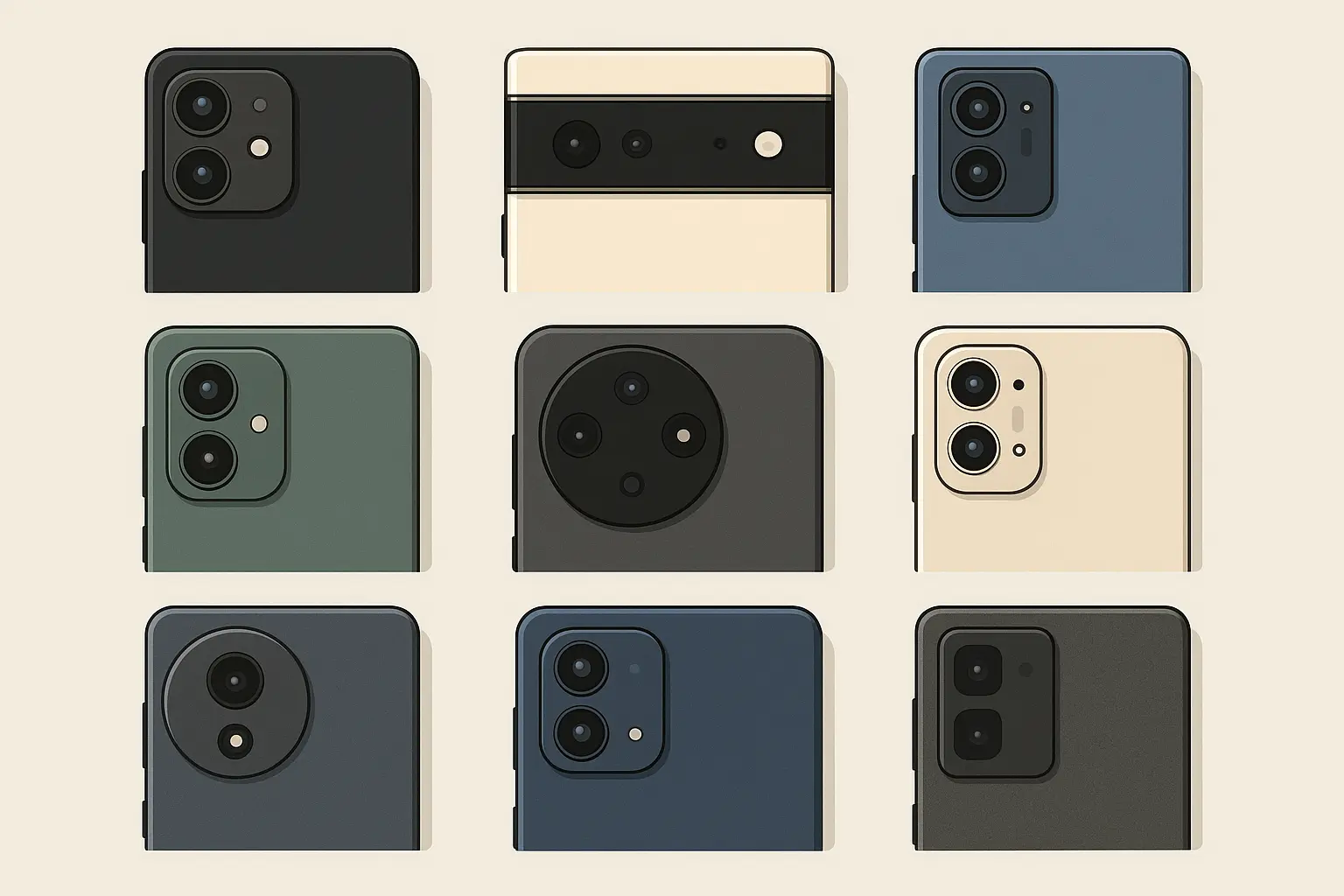
1. iPhone 15 Pro Max: The Reliable Perfectionist
Apple's latest flagship feels like having a professional photographer's assistant in your pocket. That new 5x telephoto lens finally gives iPhone users proper zoom capabilities, and the colors? Chef's kiss - they just look natural.
Camera Setup: 48MP main (f/1.78) + 12MP ultra-wide (f/2.2) + 12MP telephoto (f/2.8, 5x optical zoom)
The video quality is honestly unfair to other phones. If you're creating content or just want your family videos to look cinematic, this is your phone. Plus, it just works - no fiddling with settings, no weird processing artifacts.
Smart HDR 5 and Photographic Styles let you customize the look without over-processing. The phone maintains realistic skin tones and accurate colors across different lighting conditions, which is harder than it sounds.
2. Samsung Galaxy S24 Ultra: The Feature-Packed Overachiever
Samsung threw everything at this phone and somehow made it work. 100x zoom sounds gimmicky until you're using it to read street signs from three blocks away (yes, I actually did this).
Camera Setup: 200MP main (f/1.7) + 12MP ultra-wide (f/2.2) + 10MP telephoto (f/2.4, 3x) + 10MP telephoto (f/4.9, 10x)
The S Pen integration is surprisingly useful for photographers - imagine being able to trigger your camera remotely or make precise edits on the spot. It's like having a Swiss Army knife that takes incredible photos.
8K video recording is overkill for most people, but hey, future-proofing never hurt anyone. Just make sure you have plenty of storage space.
3. Google Pixel 8 Pro: The AI Wizard
Google's computational photography is straight-up magic. I've taken photos in lighting conditions where I literally couldn't see my hand in front of my face, and the Pixel somehow produced bright, detailed images.
Camera Setup: 50MP main (f/1.68) + 48MP ultra-wide (f/1.95) + 48MP telephoto (f/2.8, 5x optical zoom)
Magic Eraser alone is worth the price of admission. Photobomber in your perfect shot? Gone. Trash can ruining your landscape? Vanished. It's like having Photoshop built into your camera.
Night Sight performance remains unmatched - this phone sees in the dark better than you do. Real Tone ensures accurate skin tone representation across different ethnicities, addressing a problem that's plagued smartphone photography for years.
4. Xiaomi 14 Ultra: The Professional's Choice
This phone has a 1-inch sensor - that's DSLR territory. The Leica partnership brings that distinctive film-like quality that makes your Instagram look effortlessly professional.
Camera Setup: 50MP main (1-inch sensor, f/1.63) + 50MP ultra-wide (f/1.8) + 50MP telephoto (f/2.5, 3.2x) + 50MP periscope (f/4.1, 5x)
If you know your way around manual camera settings, this phone will reward you with images that rival dedicated cameras. The learning curve is steeper, but the results speak for themselves.
Leica's color science brings distinctive character to images, with options for both vibrant social media looks and authentic film-like rendering.
5. OnePlus 12: The Speed Demon
Fast doesn't even begin to describe this phone. Zero shutter lag means you'll never miss a moment, and the Hasselblad color tuning gives photos a premium look without the premium price tag.
Camera Setup: 50MP main (f/1.6) + 64MP periscope telephoto (f/2.6, 3x) + 48MP ultra-wide (f/2.2)
It's like getting 90% of flagship performance for 70% of the price. Smart move, OnePlus. The bright f/1.6 main aperture enables impressive low-light photography, while the Hasselblad partnership brings professional color grading to mainstream pricing.
Flagship Phone |
Main Camera |
Zoom Capability |
Best Feature |
Starting Price |
|---|---|---|---|---|
iPhone 15 Pro Max |
48MP, f/1.78 |
5x optical |
Natural color processing |
$1,199 |
Galaxy S24 Ultra |
200MP, f/1.7 |
10x optical + 100x digital |
Zoom versatility |
$1,299 |
Pixel 8 Pro |
50MP, f/1.68 |
5x optical |
AI photography magic |
$999 |
Xiaomi 14 Ultra |
50MP, f/1.63 (1-inch) |
5x optical |
Largest sensor + Leica |
$1,499 |
OnePlus 12 |
50MP, f/1.6 |
3x optical |
Speed + value |
$899 |
Premium Mid-Range Category: Flagship Features Without the Sticker Shock
These phones prove you don't need to sell a kidney for great photos. They smartly focus on the features that actually matter while cutting the expensive extras most people never use.
6. iPhone 15: Apple's Sweet Spot
All the iPhone magic without the Pro price tag. Sure, you lose some zoom range and a few video features, but for most people? This is more than enough iPhone.
Camera Setup: 48MP main (f/1.6) + 12MP ultra-wide (f/2.4)
The 2x crop zoom from the main sensor is clever engineering - you get extra reach without extra cost. It's not true optical zoom, but it works surprisingly well.
7. Samsung Galaxy S24: AI-Enhanced Photography
Samsung's standard flagship offers premium performance with AI-enhanced features at a more accessible price than the Ultra model. The triple camera system covers most photography needs effectively.
Camera Setup: 50MP main (f/1.8) + 12MP ultra-wide (f/2.2) + 10MP telephoto (f/2.4, 3x)
AI-powered photo editing tools help improve images after capture, while scene optimization automatically adjusts settings for different subjects and lighting conditions. It's like having a photography assistant built into your phone.
8. Google Pixel 8: Computational Photography Magic
Google's computational photography expertise shines in a more affordable package. Night Sight, Magic Eraser, and Best Take features typically found in flagship devices make this an exceptional value.
Camera Setup: 50MP main (f/1.68) + 12MP ultra-wide (f/2.2)
The phone excels in challenging conditions where computational photography makes the biggest difference. A photographer shooting a sunset at the beach will find the Pixel
8's HDR processing automatically balances the bright sky with darker foreground details, while Night Sight can capture the same scene minutes later during blue hour with remarkable detail and minimal noise.
9. Xiaomi 14: Leica Partnership Benefits
The Leica partnership brings professional color grading and optics to the mainstream premium segment. Three 50MP cameras provide consistent quality across all focal lengths.
Camera Setup: 50MP main (f/1.6) + 50MP ultra-wide (f/2.2) + 50MP telephoto (f/2.0, 3.2x)
Professional color science and processing deliver distinctive image character that sets Xiaomi apart from other Android manufacturers. It's like getting a taste of that premium Leica look without the premium price.
10. Nothing Phone (2): Unique Design, Capable Cameras
The distinctive transparent design houses surprisingly capable cameras with advanced night mode and portrait photography. The unique aesthetic appeals to users wanting something different.
Camera Setup: 50MP main (f/1.88) + 50MP ultra-wide (f/2.2)
Despite the focus on design, performance doesn't suffer. The phone delivers solid results across various shooting scenarios while looking unlike anything else on the market.
Mid-Range Value Category: The Smart Money Picks
This is where the magic happens for most people. These phones bring flagship-level photography to prices that won't require a payment plan.
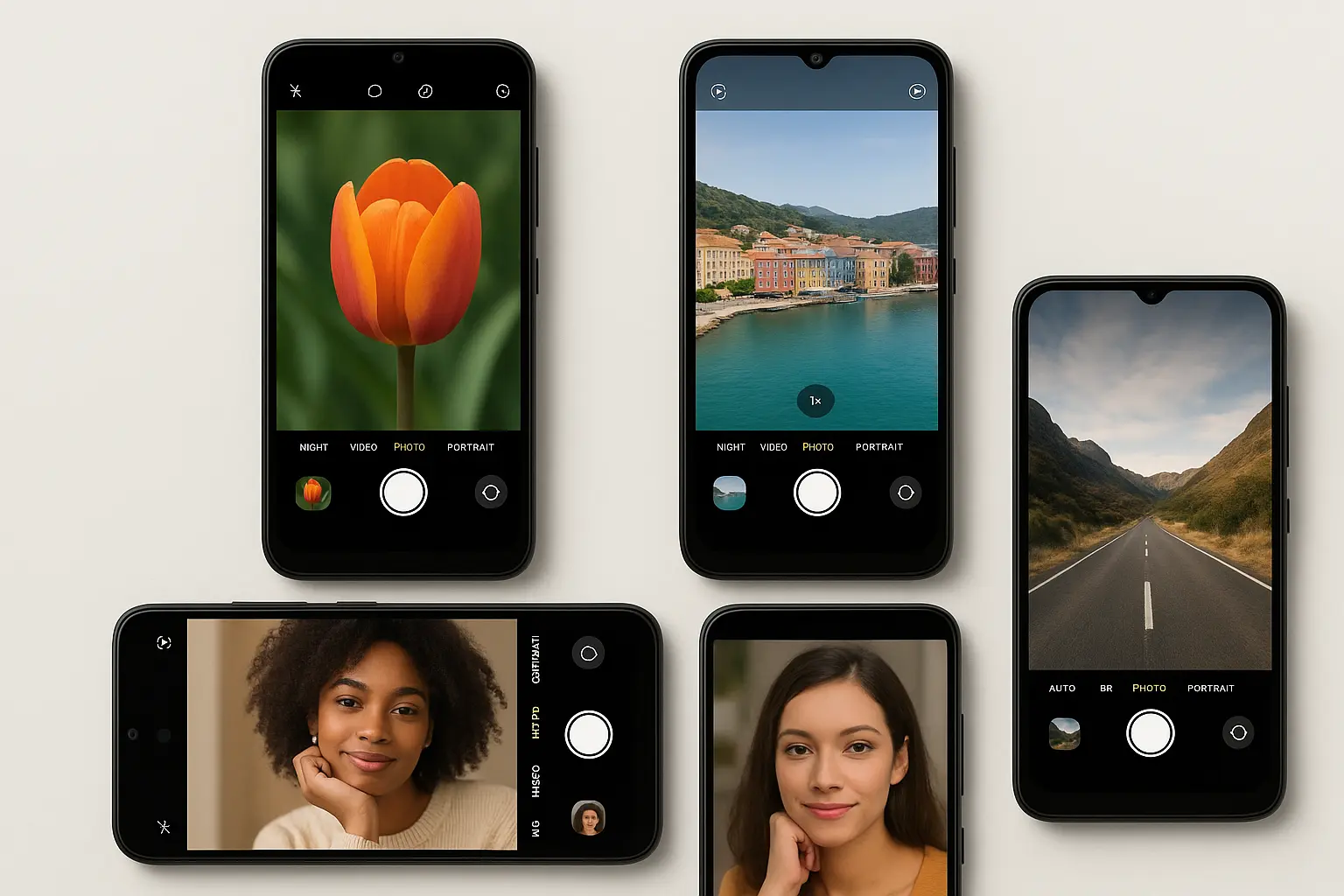
11. Google Pixel 7a: The Giant Killer
This little phone embarrasses devices costing twice as much. Google's computational photography doesn't care about your budget - it just works.
Camera Setup: 64MP main (f/1.89) + 13MP ultra-wide (f/2.2)
I've watched people compare Pixel 7a photos to iPhone 14 Pro shots and honestly struggle to tell the difference. That's the power of great software. Night Sight and Portrait mode deliver results comparable to phones costing twice as much.
12. Samsung Galaxy A54 5G: All-Around Excellence
Excellent performance with flagship-inspired features at an affordable price. The triple camera system handles most photography situations with competence.
Camera Setup: 50MP main (f/1.8) + 12MP ultra-wide (f/2.2) + 5MP macro (f/2.4)
Pro mode with manual controls appeals to users who want more creative control over their photography without flagship pricing. It's a solid all-rounder that won't disappoint.
13. OnePlus Nord 3: Flagship Performance, Mid-Range Price
The main camera delivers flagship-level performance with fast processing and reliable results. Clean OxygenOS provides a smooth user experience without bloatware.
Camera Setup: 50MP main (f/1.8) + 8MP ultra-wide (f/2.2) + 2MP macro (f/2.4)
Fast processing ensures quick shot-to-shot times, while the capable main camera handles most photography needs effectively. It's OnePlus doing what they do best - delivering premium features at accessible prices.
14. Motorola Edge 40: Clean Android, Capable Cameras
Clean Android experience combined with capable cameras and excellent low-light performance for the price. The phone offers good value without unnecessary bloatware.
Camera Setup: 50MP main (f/1.4) + 13MP ultra-wide (f/2.2)
The bright f/1.4 main aperture enables impressive low-light photography at this price point. Motorola's near-stock Android approach means you get the photography features without the clutter.
15. Realme GT 5: Gaming Phone with Photography Chops
Gaming-focused phone that doesn't compromise on camera quality, offering great value for photography enthusiasts who also game.
Camera Setup: 50MP main (f/1.88) + 8MP ultra-wide (f/2.2) + 2MP macro (f/2.4)
The phone balances gaming performance with solid camera capabilities, appealing to users with diverse mobile needs. It's proof that gaming phones don't have to sacrifice photography.
Budget-Conscious Category: Proof You Don't Need to Break the Bank
These phones won't win any spec sheet battles, but they'll capture your memories just fine - and isn't that what really matters?
16. Google Pixel 6a: Proven Excellence
Older but still excellent, leveraging Google's computational photography for results that punch above its weight class. The phone remains competitive despite its age.
Camera Setup: 12.2MP main (f/1.7) + 12MP ultra-wide (f/2.2)
Google's processing algorithms help this older hardware deliver surprisingly good results, especially in challenging lighting conditions. Sometimes the best phone camera is just good software working with decent hardware.
17. Samsung Galaxy A34 5G: Solid All-Rounder
Solid performance with good daylight photography and decent low-light capabilities. The phone offers reliable results across various shooting scenarios.
Camera Setup: 48MP main (f/1.8) + 8MP ultra-wide (f/2.2) + 5MP macro (f/2.4)
A family vacation photographer using the Galaxy A34 5G can capture sharp group photos during the day, decent sunset shots with HDR processing, and acceptable indoor restaurant photos - covering 90% of typical vacation photography needs at a fraction of flagship cost.
18. Xiaomi Redmi Note 12 Pro: Exceptional Value
Excellent value proposition with surprisingly capable main camera and good overall photography experience. The phone delivers more than expected at this price point.
Camera Setup: 50MP main (f/1.8) + 8MP ultra-wide (f/2.2) + 2MP macro (f/2.4)
The main camera performs well in various conditions, making this an excellent choice for budget-conscious photographers who still want decent quality.
19. OnePlus Nord CE 3: Balanced Performance
Balanced performance with reliable main camera and clean software experience. The phone offers good value without unnecessary complications.
Camera Setup: 50MP main (f/1.8) + 8MP ultra-wide (f/2.2) + 2MP macro (f/2.4)
Clean OxygenOS and reliable camera performance make this a solid choice for users wanting simplicity and value without sacrificing too much quality.
20. Motorola Moto G Power (2024): Battery Life Champion
Simple but effective camera system with excellent battery life for extended photography sessions. The phone prioritizes longevity over cutting-edge features.
Camera Setup: 50MP main (f/1.8) + 2MP macro (f/2.4)
The massive battery ensures you can shoot all day without worrying about power, making it ideal for travel photography where charging opportunities are limited.
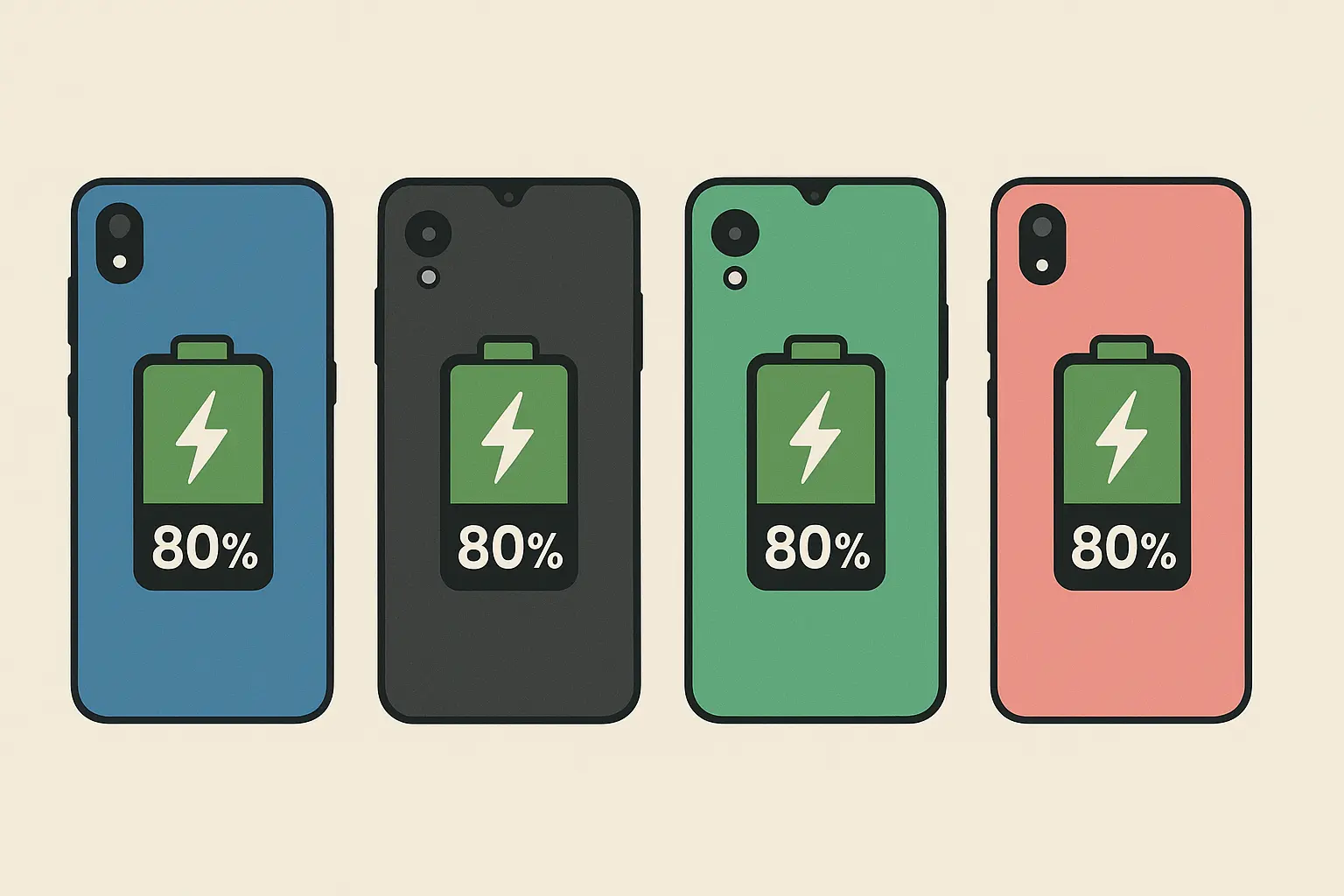
Specialized/Niche Category: For When Normal Isn't Enough
Sometimes you need a phone that does something specific really well, even if it means sacrificing elsewhere.
21. Sony Xperia 1 V: For the Control Freaks (In a Good Way)
If you miss your DSLR's manual controls, Sony gets it. This phone gives you more camera settings than you'll know what to do with.
Camera Setup: 48MP main (f/1.9) + 12MP ultra-wide (f/2.2) + 12MP telephoto (f/2.3-2.8, 3.5x-5.2x variable)
The variable telephoto lens and extensive manual controls appeal to serious photographers who want maximum creative control. It's like having a pocket-sized professional camera.
22. Asus ROG Phone 7: Gaming Meets Photography
Gaming phone with surprisingly capable cameras and unique accessories for content creation. The phone balances gaming performance with solid photography features.
Camera Setup: 50MP main (f/1.9) + 13MP ultra-wide (f/2.2) + 5MP macro (f/2.0)
Gaming-focused design doesn't compromise camera quality, making this suitable for content creators who also game. It's proof that specialized phones can still be well-rounded.
23. Fairphone 5: Sustainable Photography
Sustainable smartphone with modular design and respectable camera performance for environmentally conscious users. The phone prioritizes repairability and sustainability.
Camera Setup: 50MP main (f/1.88) + 50MP ultra-wide (f/2.2)
Environmental responsibility meets decent camera performance, appealing to users who prioritize sustainability without completely sacrificing photo quality.
24. CAT S75: Extreme Durability
Rugged smartphone built for extreme conditions while maintaining decent photography capabilities. The phone survives environments that would destroy conventional smartphones.
Camera Setup: 48MP main (f/1.79) + 8MP ultra-wide (f/2.2)
Military-grade durability ensures the camera keeps working in harsh conditions where other phones would fail. It's the ultimate "adventure-proof" camera phone.
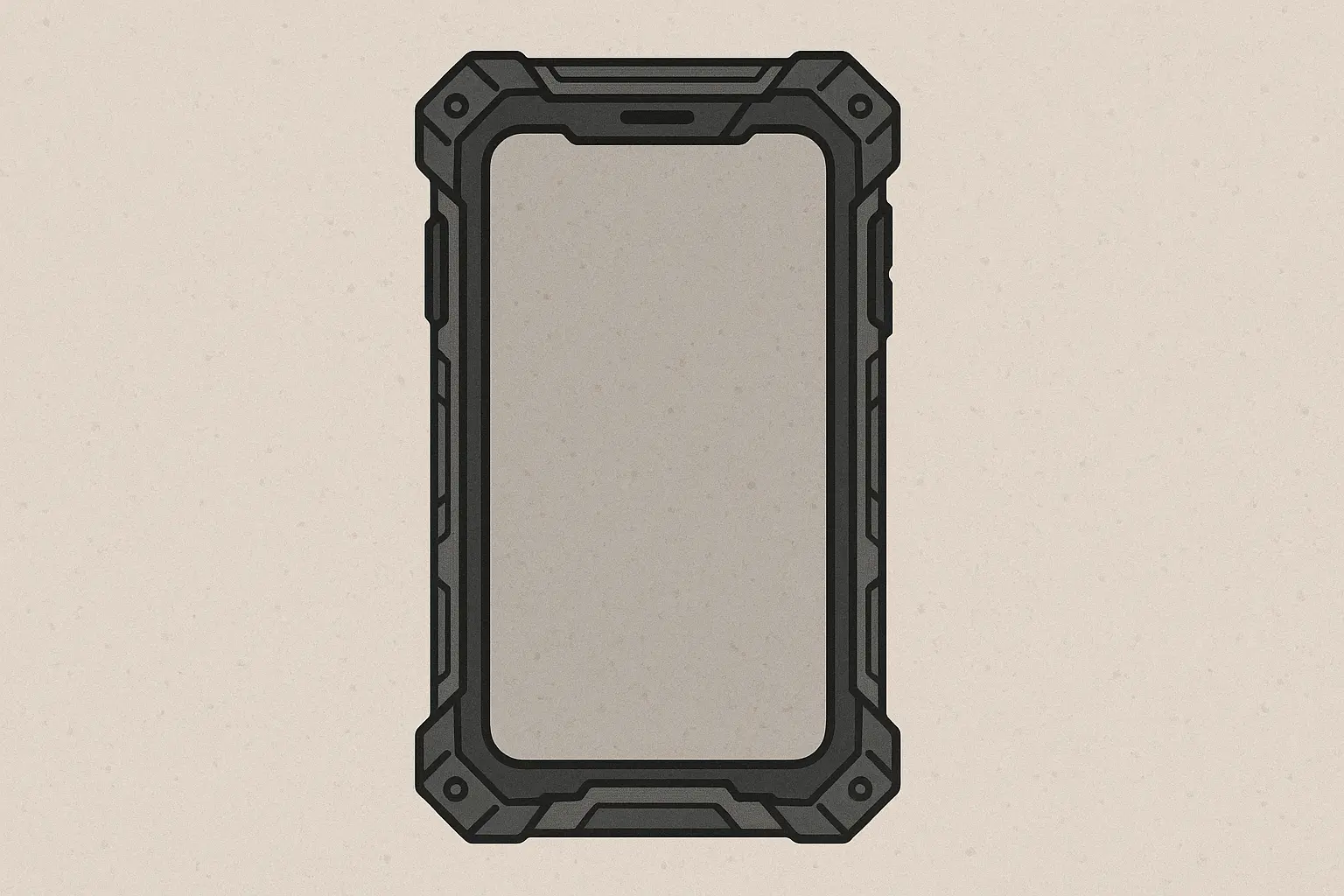
25. Blackview BV9300: Ultimate Ruggedness
Ultra-rugged design with night vision capabilities and thermal imaging for specialized use cases. The phone targets users with extreme durability needs.
Camera Setup: 50MP main (f/1.8) + 8MP ultra-wide (f/2.2)
Specialized features like thermal imaging and night vision expand photography possibilities beyond conventional smartphones. It's niche, but incredibly useful for specific professions.
Foldable Category: The Future is Weird (But Cool)
26. Samsung Galaxy Z Fold 5: The Shape-Shifter
Using this phone for photography feels like cheating. Prop it up for the perfect selfie angle, use the cover screen as a viewfinder while shooting with the main cameras - it's genuinely useful, not just a gimmick.
Camera Setup: 50MP main (f/1.8) + 12MP ultra-wide (f/2.2) + 10MP telephoto (f/2.4, 3x)
The large inner screen provides an excellent viewfinder experience, while the foldable design enables unique shooting positions and creative compositions. It's like having a portable photography studio.
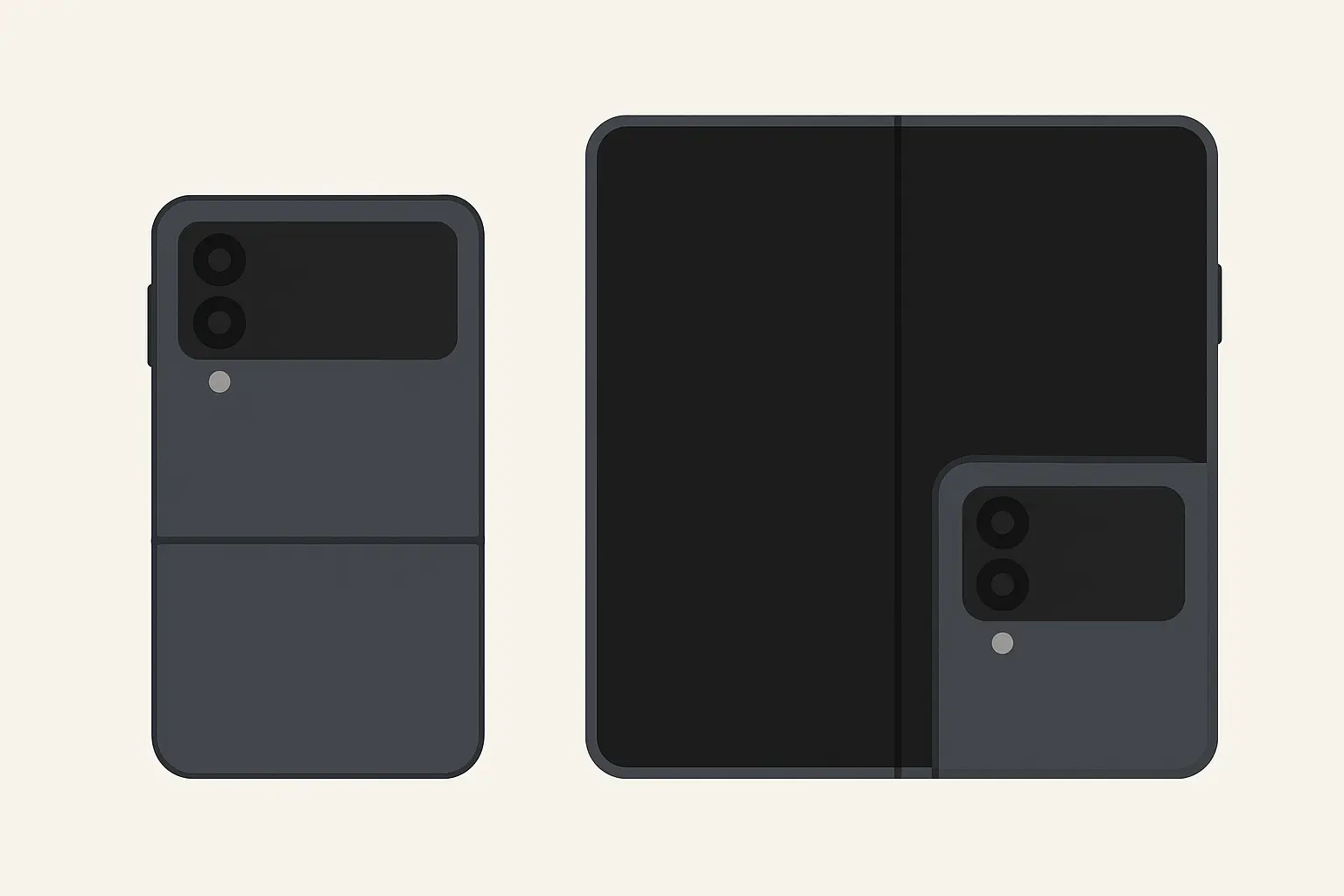
How Each Phone Actually Performs
Instead of boring spec comparisons, let me tell you what these phones are actually like to use:
For Night Photography: Pixel 8 Pro wins, hands down. It's almost supernatural how well it sees in the dark.
For Zoom: Galaxy S24 Ultra is in a league of its own. 100x zoom is ridiculous and I love it.
For Video: iPhone 15 Pro Max. Not even close - the video quality is just unfair to everyone else.
For Simplicity: Any iPhone. They just work without fuss.
For Features: Samsung Galaxy series. Sometimes too many features, but hey, options are good.
Performance Breakdown by Category
Performance Category |
Top Tier |
Strong Performers |
Budget Champions |
|---|---|---|---|
Low Light |
Pixel 8 Pro, iPhone 15 Pro Max |
OnePlus 12, Xiaomi 14 |
Pixel 7a, Galaxy A54 |
Zoom Range |
Galaxy S24 Ultra, Xiaomi 14 Ultra |
iPhone 15 Pro Max, Pixel 8 Pro |
Galaxy A54, Redmi Note 12 Pro |
Video Quality |
iPhone 15 Pro Max, Galaxy S24 Ultra |
Pixel 8 Pro, OnePlus 12 |
Galaxy S24, iPhone 15 |
Portrait Mode |
iPhone 15 Pro Max, Pixel 8 Pro |
OnePlus 12, Galaxy S24 Ultra |
Pixel 7a, Galaxy A54 |
Processing Speed |
iPhone 15 Pro Max, OnePlus 12 |
Galaxy S24 Ultra, Pixel 8 Pro |
Nord 3, Galaxy S24 |
Real-World Usage Insights
Google Pixel series leads with industry-leading AI processing - Magic Eraser and Best Take are genuinely useful, not just marketing gimmicks. iPhone series excels in natural processing that doesn't make your photos look over-processed. Samsung Galaxy series provides scene optimization and more features than you can shake a stick at.
For video capabilities, the iPhone 15 Pro Max sits in the professional tier with ProRes and Log recording, while the Samsung Galaxy S24 Ultra offers 8K capabilities. Most mid-range options provide solid 4K performance that's more than adequate for social media and family videos.
Protecting Your Photography Investment with Rokform
Look, if you're spending flagship money on a phone for its camera, protect that investment. A cracked camera lens turns your $1,200 photography powerhouse into an expensive paperweight.
Why Camera Protection Actually Matters
Modern flagship phones feature camera bumps extending 2-4mm from the body, making these expensive modules vulnerable to direct impact damage. Those delicate OIS mechanisms can suffer permanent damage from drops - and trust me, you don't want to pay for that repair.
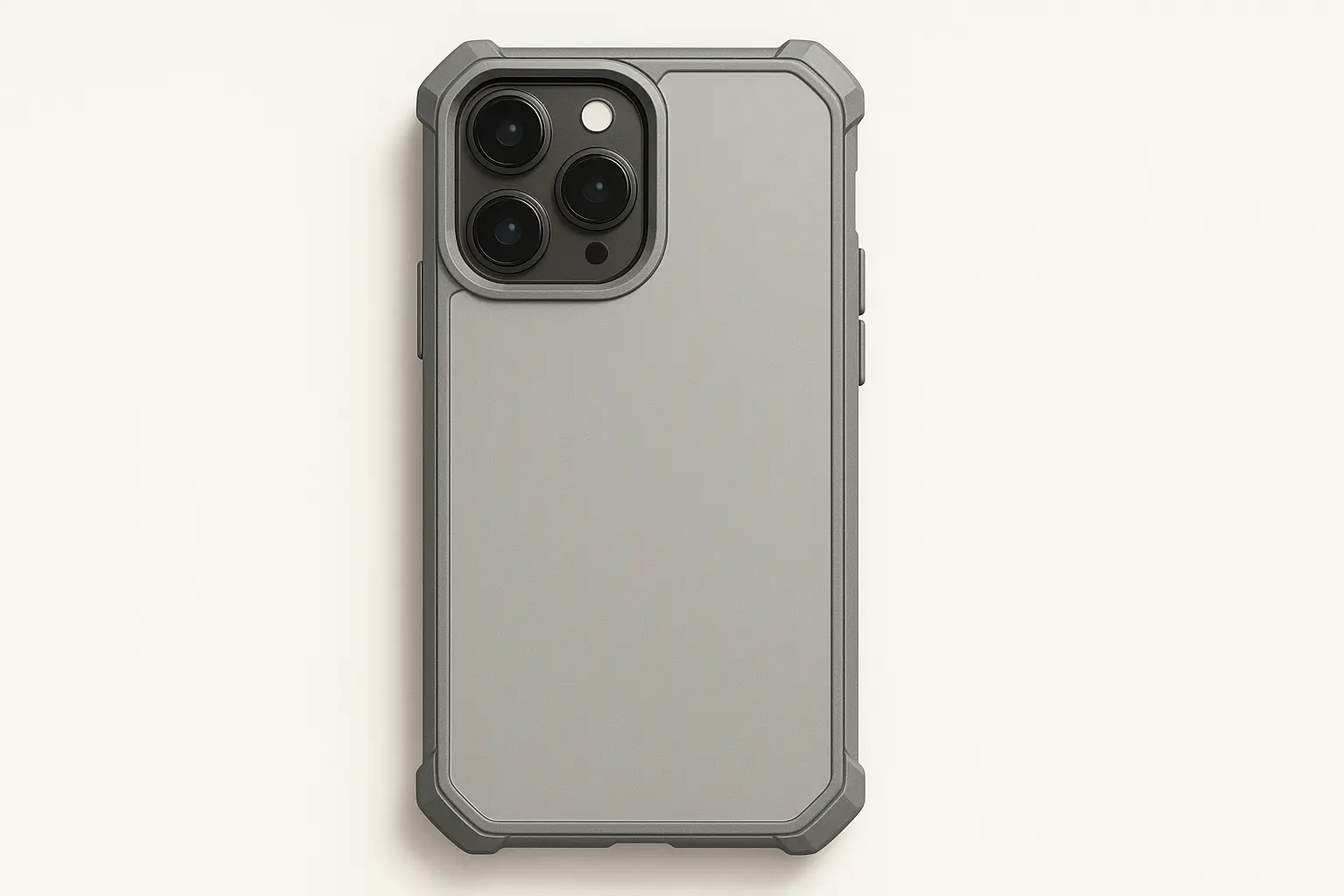
Rokform's military-grade protection specifically addresses these vulnerabilities. Their raised edges and reinforced corners protect protruding camera systems, while specialized vibration dampening preserves those critical stabilization systems.
Photography-Enabling Features
The RokLock™ twist lock system lets photographers quickly secure phones to various mounts for stable shots, time-lapses, and video recording. This proves essential for content creators using advanced camera systems who need reliable mounting solutions.
Adventure photographers need reliable mounting solutions for challenging conditions. Professional sport series bike phone mount solutions provide the stability required for capturing smooth action footage while protecting expensive camera hardware.
MagSafe compatibility ensures wireless charging works seamlessly, allowing photographers to keep devices charged during extended shooting sessions without cable interference. From pro series motorcycle stem mount solutions for travel photography to belt clips for hiking expeditions, Rokform's ecosystem supports photographers who push their equipment to limits.
Content creators who rely on their devices for professional work understand the importance of iphone photography tips combined with proper protection to maximize their mobile photography potential.
The Bottom Line
The smartphone camera landscape in 2025 offers unprecedented choice and capability across every price range. From the computational photography mastery of Google's Pixel series to the zoom versatility of Samsung's Galaxy Ultra line, each phone brings unique strengths to mobile photography.
When people ask which phone takes the best pictures, the honest answer depends on what you actually do with your camera. Google's Pixel series excels in computational photography and low-light performance - it's basically AI wizardry. Samsung's Galaxy Ultra models dominate zoom capabilities and feature richness. iPhones just work beautifully with natural colors and incredible video.
Your perfect camera phone depends on how you actually use your device. Content creators might prioritize video capabilities and multiple focal lengths, while casual photographers could find everything they need in a well-executed mid-range option with strong computational photography. The best phone camera for you aligns with your photography priorities and budget constraints.
Remember that the best camera is the one you have with you - and the one that keeps working when you need it most. Whether you choose a flagship powerhouse or a budget champion, protecting that investment ensures your photography capabilities remain intact through whatever adventures await.
The beauty of today's market is that you really can't go wrong. Even budget phones now pack features that were flagship-exclusive just a few years ago. Pick the one that fits your needs and budget, protect it properly, and start creating memories.







